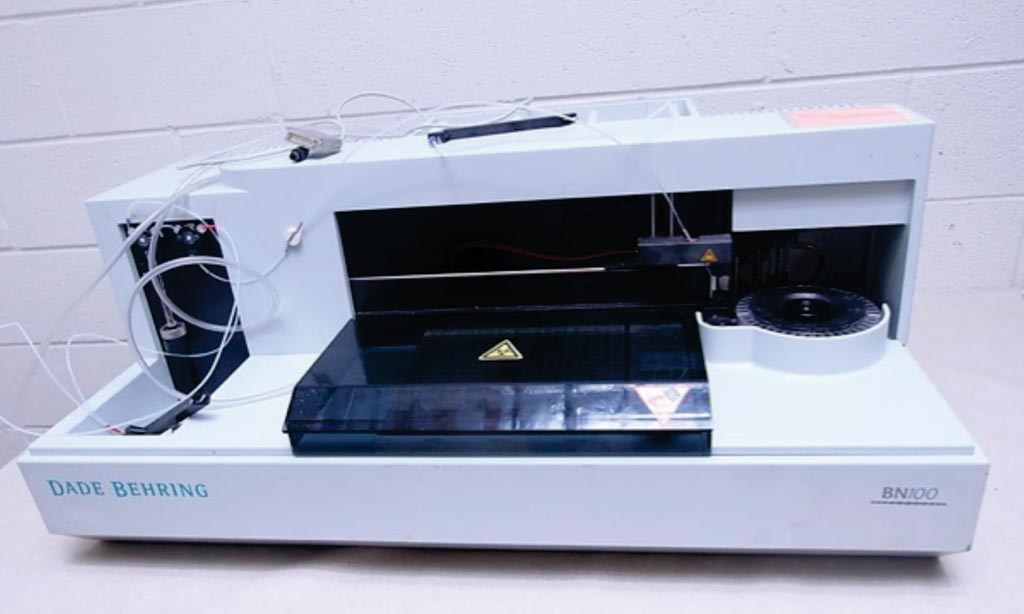Chronic Inflammation Linked to Risk for Alzheimer's Disease
By LabMedica International staff writers
Posted on 30 Oct 2018
While it has been widely shown that possessing the apolipoprotein E4 (ApoE4) gene is the major genetic risk factor of Alzheimer's disease (AD), not all ApoE4 carriers develop AD. It is likely that a complex interaction of genetic vulnerabilities with environmental risk factors lead to AD and identifying such factors could be beneficial for the prevention of AD.Posted on 30 Oct 2018
C-reactive protein (CRP) is an immune system response to toxins or injuries in systemic inflammation, while CRP levels increase with age. Although multiple AD-related genes are associated with the level of CRP, the association between blood CRP levels and risk of AD are not conclusive as previous studies have presented both low and high levels of CRP in patients with AD.

Image: The Dade Behring BN100 nephelometer (Photo courtesy of Siemens Healthineers).
Scientists at Boston University School of Medicine (Boston, MA, USA) in a cohort study, evaluated data from 2656 members of the Framingham Heart Study offspring including longitudinal measures of serum C-reactive protein (CRP), diagnoses of incident dementia including AD, and brain volume. Chronic low-grade inflammation was defined as having CRP at a high cutoff level at a minimum of two time points.
CRP concentrations at examinations two and six were performed in the Framingham Heart Study laboratory using a previously described enzymatic immunoassay. The CRP measurement at examination seven was conducted by a Dade Behring BN100 nephelometer. Data on a subset of 1,785 individuals, who also underwent brain magnetic resonance imaging (MRI) after the seventh examination were used for secondary analyses to examine the association between CRP, ApoE, and AD-related changes in brain structure.
The scientists found that during the 17 years of follow-up, 194 individuals (7.3%) developed dementia, 152 (78.4%) of who had AD. ApoE4 coupled with chronic low-grade inflammation, defined as a CRP level of 8 mg/L or higher, was associated with an increased risk of AD, especially in the absence of cardiovascular diseases (hazard ratio = 6.63), as well as an increased risk of earlier disease onset compared with ApoE4 carriers without chronic inflammation. A subset of 1,761 individuals (66.3%) underwent brain magnetic resonance imaging, and the interaction between ApoE4 and chronic low-grade inflammation was associated with brain atrophy in the temporal lobe and hippocampus.
Wendy Qiao Qiu, MD, PhD, an associate professor of psychiatry and senior author of the study, said, “Finding out what mediating factors for ApoE4 increase AD risk is important for developing intervention and prevention of the disease. Since many elders have chronic low-grade inflammation after suffering from common diseases like cardiovascular diseases, diabetes, pneumonia and urinary tract infection, or after having surgeries, rigorously treating chronic systemic inflammation in ApoE4 carriers could be effective for prevention of Alzheimer's dementia.” The study was published on October 19, 2018, in the journal JAMA Network Open.
Related Links:
Boston University School of Medicine













